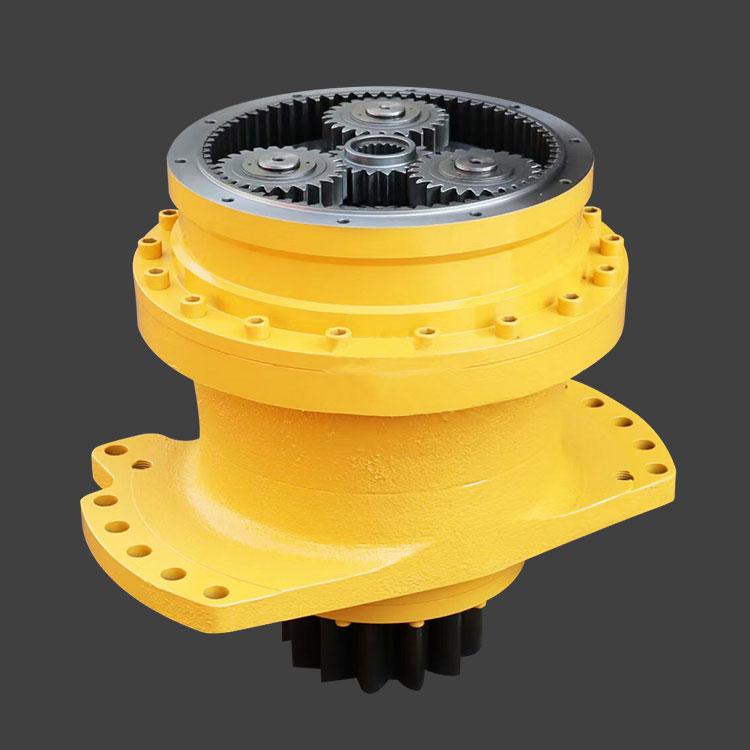Revolutionizing Heavy Machinery: The Impact of Advancements in Materials and Manufacturing on Swing Reduction Gearboxes
2024-03-22
In the dynamic world of heavy machinery, advancements in materials and manufacturing techniques have brought about significant innovations in the design and performance of critical components like swing reduction gearboxes. These advancements have not only enhanced the efficiency and durability of gearboxes but also contributed to improved safety and productivity in various industries. In this blog, we'll explore how these advancements have reshaped the landscape of swing reduction gearboxes, revolutionizing their design and performance.
1. High-Strength Materials:
Advancements in metallurgy have led to the development of high-strength materials capable of withstanding heavy loads and extreme operating conditions. Materials such as alloy steels, hardened alloys, and advanced composites are now commonly used in the construction of swing reduction gearboxes. These materials offer superior strength, toughness, and fatigue resistance, resulting in gearboxes that can endure prolonged operation without compromising performance or reliability.
2. Precision Manufacturing Techniques:
Manufacturing techniques such as computer numerical control (CNC) machining, additive manufacturing (3D printing), and precision forging have revolutionized the production of swing reduction gearboxes. These techniques allow for the creation of complex geometries with tight tolerances, ensuring optimal gear meshing, alignment, and efficiency. Additionally, advanced manufacturing processes enable the production of lightweight yet durable components, reducing the overall weight and inertia of gearboxes while maintaining structural integrity.
3. Improved Lubrication Systems:
Advancements in lubrication technology have played a crucial role in enhancing the performance and longevity of swing reduction gearboxes. Modern gearboxes are equipped with advanced lubrication systems that deliver precise amounts of lubricant to critical components, ensuring optimal lubrication under varying operating conditions. These systems may include automatic lubrication pumps, oil misting systems, and sealed lubrication chambers, minimizing wear, friction, and heat generation for extended gearbox life.
4. Enhanced Gear Tooth Profiles:
The design of gear teeth has undergone significant refinement with the introduction of advanced modeling and simulation techniques. Computer-aided design (CAD) software allows engineers to optimize gear tooth profiles for maximum efficiency, load distribution, and contact ratio. This results in quieter operation, reduced vibration, and improved power transmission efficiency in swing reduction gearboxes, enhancing overall performance and reliability.
5. Integration of Smart Technologies:
The integration of smart technologies such as sensors, actuators, and condition monitoring systems has transformed swing reduction gearboxes into intelligent components capable of self-diagnosis and predictive maintenance. Sensors embedded within the gearbox can detect changes in temperature, vibration, and lubricant condition, providing real-time data on gearbox health and performance. This enables proactive maintenance, minimizing downtime and maximizing equipment uptime.
6. Customization and Modular Design:
Advancements in materials and manufacturing techniques have facilitated the customization and modular design of swing reduction gearboxes. Manufacturers can now tailor gearbox configurations to meet the specific requirements of different applications, allowing for greater flexibility and versatility in heavy machinery design. Modular construction also simplifies maintenance and repair, as individual components can be easily replaced or upgraded without the need for extensive disassembly.
Conclusion:
In conclusion, advancements in materials and manufacturing techniques have revolutionized the design and performance of swing reduction gearboxes, making them more robust, efficient, and adaptable to the evolving needs of heavy machinery applications. With the use of high-strength materials, precision manufacturing techniques, improved lubrication systems, enhanced gear tooth profiles, integration of smart technologies, and customization through modular design, swing reduction gearboxes have become essential components in driving innovation and progress in the field of heavy machinery. As technology continues to advance, we can expect further refinements and enhancements that will shape the future of swing reduction gearboxes and the industries they serve.



